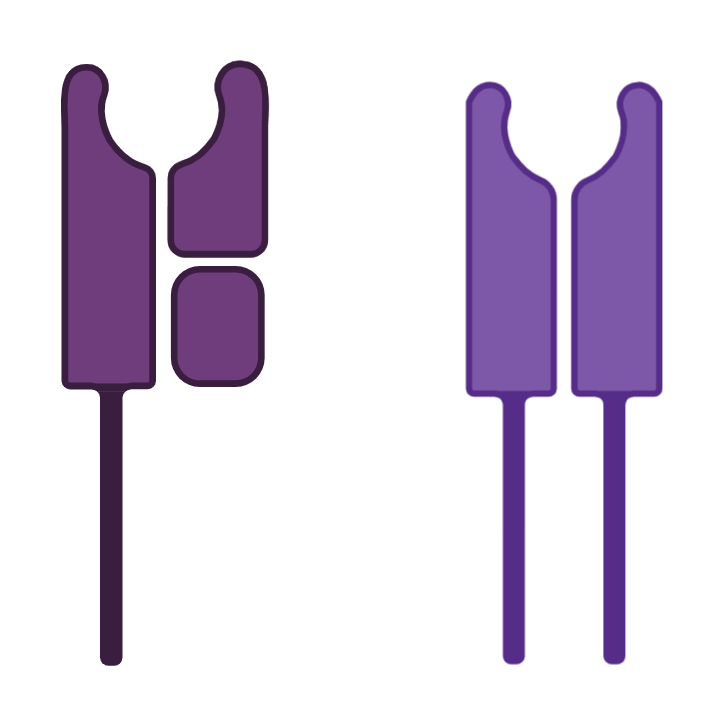
Endothelial cell
Endothelial cells make up the walls of blood vessels, arterial and venous, whatever their calibre. We therefore find endothelial cells in the very small arterioles and venules irrigating and draining the tissues of the organs.
Endothelial cells express on their surfaces:
- Class I HLA molecules, as well as all nucleated cells in the body.
- Class II HLA molecules: little present in the basal state, they are nevertheless particularly quick to be expressed during cellular stress or an inflammatory situation.
Cellular stress or inflammatory situation: as in organ transplantation!
The ABO system is a tissue system
ABO antigens are not carried only by red blood cells, but by many tissues including endothelial cells, to the point that the ABO system can be considered a histocompatibility system!
 Ag: Antigen; Ab: Antibody
Ag: Antigen; Ab: AntibodyABO compatibility in organ transplantation
In transplantation, it is important to take ABO compatibility into account because the antigens of this system are present on the surface of the endothelia which line the arterioles and venules transplanted with the organ. On the other hand, rhesus antigens are not carried by endothelial cells: individuals can therefore be transplanted regardless of their rhesus.
- Group O individuals are universal donors in the absence of antigen present on the surface of red blood cells and endothelial cells. On the other hand, the presence of anti-A and anti-B antibodies in their serum makes group O recipients only compatible with individuals of the same blood group.
- Conversely, group AB individuals are universal recipients in the absence of anti-A and anti-B antibodies present in their serum. They can only give to AB recipients, all other groups having anti-A and/or anti-B antibodies.
Compatibility in the ABO system
| Recipient | A | B | AB | O |
|---|---|---|---|---|
| Donor | ||||
| A | isogroup | incompatible | compatible | incompatible |
| B | incompatible | isogroup | compatible | incompatible |
| AB | incompatible | incompatible | isogroup | incompatible |
| O | compatible | compatible | compatible | isogroup |
If we transplant a recipient with antibodies directed against an ABO antigen present in the donor (example of a recipient with blood group O and a donor with blood group other than O), it is almost certain that hyperacute rejection occurs due to the antibodies preformed in the recipient, which will directly agglutinate against the antigens on the surface of the endothelial cells, immediately leading to complement activation, and then an entire inflammatory cascade leading to graft necrosis.

- In the case of a transplant with a cadaveric donor, the transplants are always ABO compatible, and most often carried out in isogroup.
- In the case of transplantation with a living donor, ABO incompatibility may be authorised but the recipient then receives desensitisation before transplantation and a reinforced immunosuppressive protocol.
What needs to be remembered
Compatibility in the ABO system is a major criterion for the success of the transplant, just like HLA compatibility.On the other hand, rhesus compatibility is not a criterion for allocation of grafts, given that rhesus antigens are not carried by the tissues.



